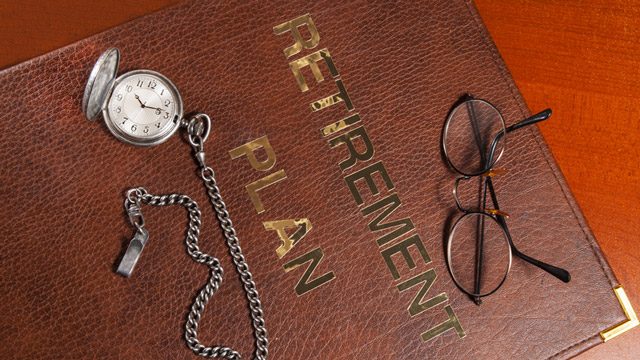SUMMARY
This is AI generated summarization, which may have errors. For context, always refer to the full article.

A few days ago I read an article about retirement on Rappler that said that “Most Filipinos are not ready for retirement.”
It was discomforting, more so since I am a financial planner and know the funding needs of retirement and the challenges of preparing for it.
For one, pension received will barely suffice—if at all.
To illustrate: suppose that you are a 35-year-old private sector employee and expecting P15,000 ($321.9) per month pension starting at age 60, this translates to receiving just P5,900 ($126.67) per month today, given an estimated inflation rate today of 3.8%.
Can you live comfortably on P5,900 per month?
When you factor in expenses apart from the usual ones, most notably hospital bills, check-ups, medicine, even caregivers then let’s face it: P5,900 a month would not be enough.
And a company’s retirement package? You’d be lucky if it would last a decade. A P5 million ($107,310) retirement pay would only last 4 years and several months if you are now comfortably living off of a P48,000 ($1,030) per month salary. Then after that, it’s just you and P5,900 per month.
No wonder a lot of retirees and prospective retirees are insecure.
Proper planning
But this should not be the case for us, nor should we have the same fate. With proper planning, we can now reasonably determine how much we need for retirement and how much to set aside for it.
To do that, first determine the level of expenditures expected during retirement. The primary basis for that is your current cash flow. So this means you have to jot down all your expenses per month: transportation, food, groceries, bills, etc then add up other expenses that do not occur per month such as gifts, payments, etc. Now, you have your annual expense.
From this annual expense, the retirement expense can be inferred. One study shows that the level of expense during retirement is between 70% and 80% of the expense before retirement.
For instance, if you are spending P40,000 ($$858.4) per month before retirement, your expenses during retirement would be between P28,000 – P32,000 ( $600.9 – $686.7) per month (or P384,000 / $8241 per year). Makes sense, really, as some expenses would not be there anymore: no tuition fees, you’ll spend less on gimmicks and transportation…although some expenses would come up, chiefly, medical expenses.
Factoring in inflation
With retirement expenses established, then you can project the annual expenses during retirement using a sound inflation rate.
Average historical data from the Bangko Sentral ng Pilipins (BSP) can be used, although projections, which the website Trading Economics can provide may be more reasonable.
For example, a 35-year-old employee with an income of P384,000 per year (or P32,000 per month) would amount to P971,000/year ($20,839/year) at age 60 at current inflation rates.
If the average life expectancy is age 80, the total fund needed at age 60 is P20.4 million, provided that the fund is still reinvested with an instrument equal to inflation, and that only the yearly annual expense is withdrawn.
But that may not be the case as final amount as a retirement lump-sum is also paid, the amount of which should be subtracted from the fund needed. If, for example, a P5 million ($107,310) lump-sum is given, then the fund needed would be down to P15.4 million ($330,517).
Given this target amount, an investment plan now can be made to achieve it. The choice of instrument, its projected rate of return, and the length of investing period largely determine how much should be invested per year or month.
If, for example, a retirement fund is started using an equity fund giving 12% return per year with an investing period of 25 years, then you should set aside P115,000/$2,468 per year (or P8,200/ $175.9 per month, if done monthly) to get to that P15.4 million.
This, however, is just a general run-through of retirement planning. A lot of other factors should also be considered as well, such as where to retire, the desired retirement lifestyle, the long-term health care plans, leaving legacies, etc.
As such, it is best to do it with a professional who knows how to create and design retirement plans, with your needs and best interest in mind. – Rappler.com
Got a question about personal finance? Tweet @rapplerdotcom or email us at business@rappler.com.
 Rienzie P. Biolena is a registered financial planner of RFP Philippines, a professional group of financial planners in the country. To learn more about RFP, you may email info@rfp.ph.
Rienzie P. Biolena is a registered financial planner of RFP Philippines, a professional group of financial planners in the country. To learn more about RFP, you may email info@rfp.ph.
Rienzie is also an accredited investment fiduciary of Pennsylvania-based fi360 and an international member of the Financial Planning Association, the largest association of financial planners in the US. You may reach Rienzie at rienzie.biolena@gmail.com, his Facebook account or Twitter @rbiolena.
$1 = P 46.59
Retirement plan image from Shutterstock
Add a comment
How does this make you feel?
There are no comments yet. Add your comment to start the conversation.